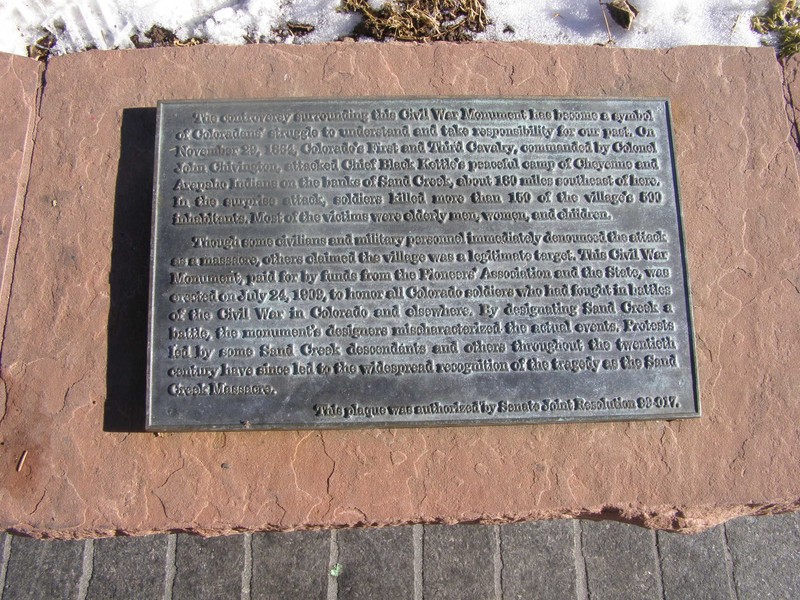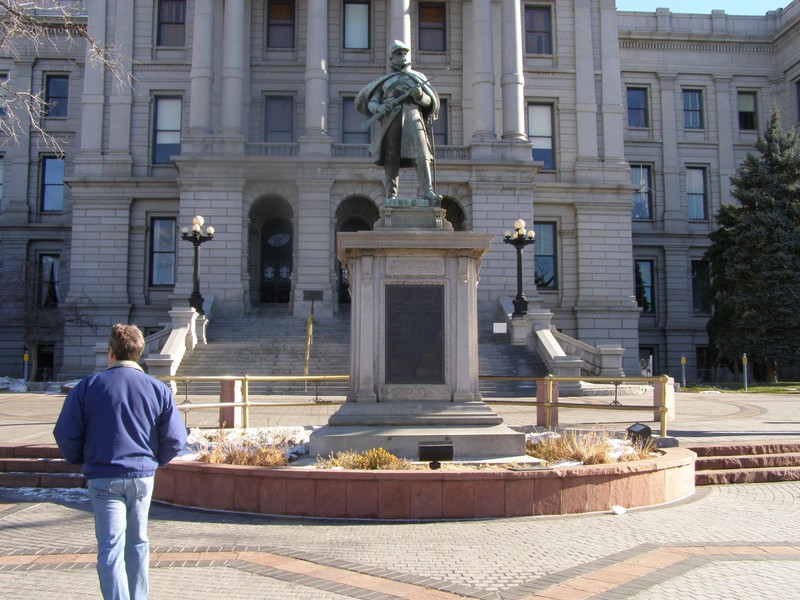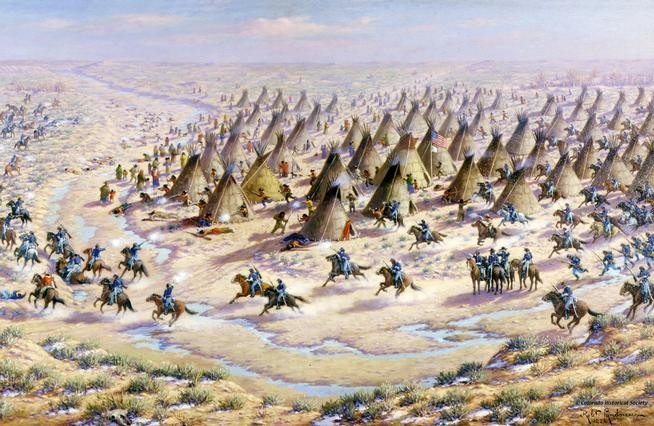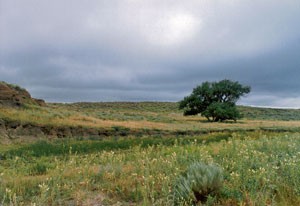Sand Creek Massacre Historical Marker
Introduction
Text-to-speech Audio
The Sand Creek Massacre historical marker, located in front of the Civil War monument near the Colorado State Capitol, details one of the most controversial events in Colorado history. In essence, the Sand Creek Massacre was a massive atrocity during the American Indian Wars in 1864 that consisted of the killing and mutilation of between 70 and 163 Native American women, children, and elderly people by a 700-man force of Colorado Territory militia. Some civilians immediately denounced the attack, recognizing it as a massacre, while many others thought of the destruction of the peaceful villages of Cheyenne and Arapaho as legitimate targets in a war.
The Civil War monument was built in 1909 and funded by the Pioneers’ Association and the State to honor Colorado soldiers who fought in battles in the Civil War. However, as Sand Creek was considered a battle, it was listed on the monument, mischaracterizing the nature of the attack. The monument caused protests and, consequently, greater recognition of the Sand Creek Massacre.
Images
Sand Creek Massacre Historical Marker

Civil War Monument in front of the Colorado State Capitol

Robert Lindneaux's portrayal of the Sand Creek Massacre

The site of the Sand Creek Massacre

Backstory and Context
Text-to-speech Audio
History of the Sand Creek Massacre
Ever since the first Americans arrived in the Colorado Territory, there have been hostile tensions between the settlers and local tribes. Nonetheless, the U.S. Government tried appeasing tribe leaders through various treaties, such as the Larimer Treaty of 1851, which gave local tribes extensive territory. But with the Pike’s Peak gold rush beginning in 1858, as well as other factors, the U.S. Government renegotiated the terms of the treaty. By 1861, the Treaty of Fort Wise took much of this land away, reducing the size of Southern Cheyenne and Arapaho land by 1/13th.
To preserve peace and the security of their people, many tribal leaders accepted the terms of the treaty. Of course, some were not happy with the decision, especially the Dog Soldiers comprised of Cheyenne and Lakota. By 1864, under the blessing of Colorado governor John Evans, Colonel John Chivington and his forces began attacking Cheyenne camps. The Cheyenne retaliated and furthered the aggression of U.S. Troops. But two chiefs, Black Kettle and White Antelope, continued working for peace by trying to establish a truce. The chiefs decided to fly American flags over their villages.
Despite the calls for peace, on November 29th, 1864, Colonel Chivington and a 700-man army attacked Native American campsites near Fort Lyon. Many of the villages’ men were out hunting, but Chivington attacked nonetheless, even with the American flag flying overhead and a white flag that was raised once the attack began. Most of those killed were women and children.1
Inscription on the Historical Marker
The controversy surrounding this Civil War Monument has become a symbol of Coloradens' struggle to understand and take responsibility for our past. On November 29, 1864, Colorado's First and Third Cavalry, commanded by Colonel John Chivington, attacked Chief Black Kettle's peaceful camp of Cheyenne and Arapaho Indians on the banks of Sand Creek, about 180 miles southeast of here. In the surprise attack, soldiers killed more than 150 of the village's 500 inhabitants. Most of the victims were elderly men, women, and children.
Though some civilians and military personnel immediately denounced the attack as a massacre, others claimed the village was a legitimate target. This Civil War Monument, paid for by funds from the Pioneers' Association and the State, was erected on July 24, 1909, to honor all Colorado soldiers who had fought in battles of the Civil War in Colorado and elsewhere. By designating Sand Creek a battle, the monument's designers mischaracterized the actual events. Protests led by some Sand Creek descendants and others throughout the twentieth century have since led to the widespread recognition of the tragedy as the Sand Creek Massacre.2
Sources
1.) "Sand Creek Massacre: Facts, information and articles about The Sand Creek Massacre, an event of Westward Expansion from the Wild West." HistoryNet. Accessed February 28, 2016, http://www.historynet.com/sand-creek-massacre
2.) "Sand Creek Massacre." Historical Marker Database, hmdb.org. Accessed February 28, 2016, http://www.hmdb.org/marker.asp?marker=6755
